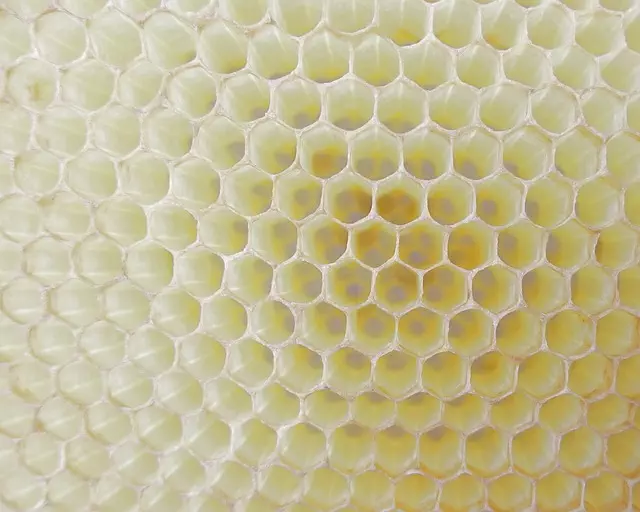Fat cell freezing (cryolipolysis) is a non-invasive, outpatient procedure that uses cold temperatures to destroy fat cells, preventing fat storage and promoting their breakdown by the immune system. It offers minimal downtime compared to surgical alternatives, allowing individuals to resume daily activities promptly. The process involves applying a cooling device to targeted areas like the abdomen, flanks, or thighs, causing fat cells to shrink and become less visible. Multiple sessions may be needed for optimal results, and while it's generally safe and effective, it's not suitable for everyone and requires proper post-care to minimize side effects.
Discover the revolutionary approach to fat cell reduction without downtime. This comprehensive guide explores Fat Cell Freezing, a non-invasive procedure gaining popularity for its efficacy and minimal recovery time. Learn how this science-backed method works, its advantages over traditional techniques, ideal candidate selection criteria, and safety considerations. By understanding Fat Cell Freezing, you’ll be empowered to make an informed decision for achieving your body contouring goals with ease.
Understanding Fat Cell Reduction: A Comprehensive Overview

Fat cell reduction is a sought-after goal for many, and with good reason. Understanding fat cell freezing as a method can provide clarity on achieving this desirable outcome without downtime. Fat cells, or adipocytes, store energy in the form of lipids, which they release when needed. Traditional methods of weight loss target these cells through exercise and dieting, but for some, non-invasive procedures like fat cell freezing offer a promising alternative.
This innovative approach utilizes cold temperatures to freeze and destroy fat cells, preventing them from storing fat and promoting their natural breakdown by the body’s immune system. Unlike surgical options that require downtime and recovery, fat cell freezing treatments can be performed in quick sessions, allowing individuals to return to their daily routines almost immediately.
Fat Cell Freezing: The Non-Invasive Approach

Fat cell freezing, also known as cryolipolysis, is a non-invasive approach to fat reduction that has gained significant popularity in recent years. This procedure involves the targeted cooling of fat cells to temperatures below -13°F (-25°C), causing them to crystallize and eventually die. The body then naturally processes and eliminates these damaged fat cells, leading to reduced fat deposits in the treated areas. One of the key advantages of fat cell freezing is its minimal downtime. Unlike surgical procedures that require extensive recovery periods, fat cell freezing can be performed as an outpatient treatment, allowing individuals to return to their daily routines almost immediately.
The process typically involves the application of a cooling device to specific problem areas, such as the abdomen, flanks, or thighs. The device delivers cold energy to the fat cells, causing them to shrink and become less visible. Multiple sessions are often necessary to achieve optimal results, as not all fat cells are targeted in a single treatment. Moreover, fat cell freezing is generally considered safe and effective for most individuals who maintain a healthy lifestyle.
How Does Fat Cell Freezing Work? Unlocking the Science Behind It

Fat cell freezing, also known as cryolipolysis, is a non-invasive fat reduction procedure that has gained popularity for its effectiveness and minimal downtime. The process involves cooling targeted fat cells to temperatures below -13°F (-25°C), causing them to crystallize and eventually die. This treatment prompts the body’s natural response to eliminate these damaged cells, leading to reduced fat in the treated areas.
The science behind fat cell freezing is rooted in understanding the properties of fat cells and how they respond to cold. Different types of fat cells, including subcutaneous and visceral fat, have distinct characteristics. During the procedure, targeted fat cells are cooled while deeper tissues remain unscathed. This selective process ensures minimal discomfort and quick recovery, making it a preferred method for those seeking localized fat reduction without surgery or lengthy recovery periods.
Benefits of Choosing Fat Cell Freezing Over Traditional Methods

Choosing fat cell freezing, or cryolipolysis, over traditional methods like surgical procedures or intense laser treatments offers several significant advantages. Firstly, it’s a non-invasive procedure that doesn’t require any downtime. This means patients can resume their regular activities and work schedules immediately after the treatment, without the healing time typically associated with other methods.
Secondly, fat cell freezing is highly targeted, allowing for more precise reduction of stubborn fat deposits. It cools fat cells to temperatures below -13°F, causing them to die and be naturally eliminated by the body over time. This selective process ensures minimal damage to surrounding tissues and skin, leading to fewer side effects and a smoother recovery.
Candidate Selection: Who Is a Good Fit for Fat Cell Freezing?

Fat cell freezing, also known as cryolipolysis, is a non-invasive procedure that has gained popularity for fat reduction. However, not everyone is a good candidate for this treatment. Ideal candidates are individuals with localized fat deposits who maintain a healthy lifestyle and weight. It’s crucial to have realistic expectations, as fat cell freezing may not be effective for significant weight loss or treating widespread obesity.
During the consultation, medical professionals consider factors like overall health, medical history, skin thickness, and specific areas of concern. Patients should be in good general health, non-smokers, and willing to adhere to treatment instructions. Since it targets specific fat bulges, fat cell freezing is particularly suitable for those with stubborn fat that resists diet and exercise efforts.
Safety and Efficacy: Addressing Common Concerns and Myths

Many individuals seeking fat cell reduction often have concerns about safety and efficacy, especially with non-invasive procedures like Fat Cell Freezing. It’s crucial to dispel common myths and provide clarity on these matters. Clinical studies have shown Fat Cell Freezing to be generally safe and effective for targeted fat reduction. This procedure involves cooling and freezing fat cells, leading to their permanent destruction without causing significant downtime or side effects in most cases.
Compared to surgical options with extended recovery periods, Fat Cell Freezing offers a more comfortable and quicker recovery. Common side effects are usually mild, including temporary redness, swelling, and numbness at the treatment site, which subside within days. There’s no need for extensive rest, allowing individuals to resume their daily activities promptly after the procedure. Addressing these safety and efficacy concerns can help alleviate doubts and empower individuals to make informed decisions regarding their body contouring journeys.
Post-Treatment Care: Minimizing Downtime for Optimal Results

After a fat cell freezing treatment, proper post-care is crucial for minimizing downtime and maximizing results. Patients should expect some temporary redness, swelling, or discomfort in the treated areas, but these symptoms typically subside within a few days. Staying hydrated by drinking plenty of water can help reduce any potential side effects and support the body’s natural healing process.
In the initial recovery period, it’s recommended to avoid strenuous activities or exercises that might cause strain on the treated areas. Light physical activity, such as gentle walks or stretching, is generally safe and encouraged to promote blood circulation and aid in the reduction of any residual swelling. Remember to listen to your body and take breaks when needed. Additionally, maintaining a healthy diet rich in nutrients can contribute to faster recovery and overall well-being.
